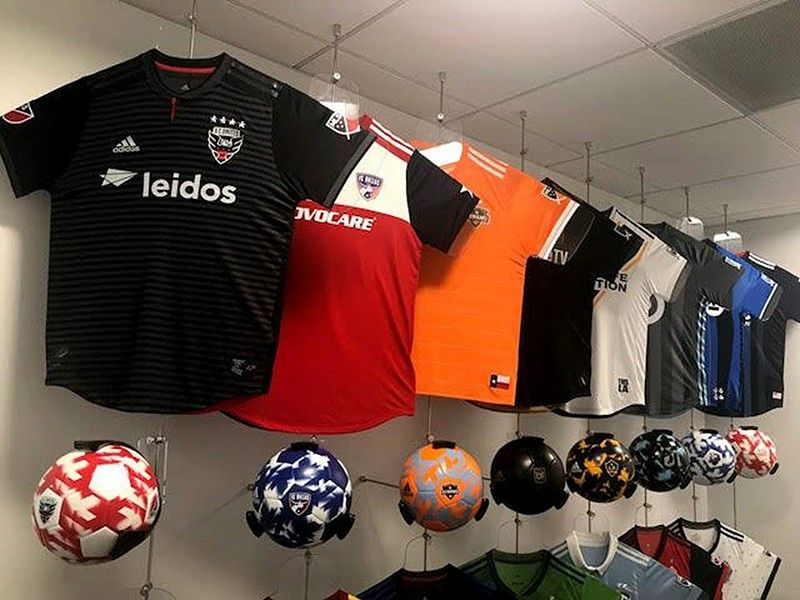The MLS experience


The 2018 Russia World Cup is ongoing and the globe has come to a stop to appreciate the best footballers on the grandest stage.
It seems like the Philippines is one of the few countries that the “beautiful game” hasn’t been able to fully penetrate. But looking at its rise in the United States, there is still hope.
Soccer wasn’t a prominent sport in the US until it got a huge boost with their hosting the 1994 World Cup. Then things started to grow, and eventually Major League Soccer (MLS) began its initial season in 1996.
I was recently in New York and had the opportunity to visit the MLS office, and it was an eye opener.
A big thank you to Philippine Football Federation president Nonong Araneta who introduced me to USA Soccer president Carlos Cordeiro, who incidentally was the head of the team from North America that won the rights for the 2026 edition of the World Cup.
Cordeiro arranged for my visit to the MLS office on Fifth Avenue. Everything was setup by Neil Buethe, chief communications officer of US Soccer, and I was met and assisted by Marisabel Munoz, vice president-communications of MLS.
Marisabel took us around both floors of their office and gave a lot of insight and information on the league.
From 10 teams when they began — after slowly overcoming growing pains and early struggles — it is now flourishing. They now have 23 teams, and in a few years time, they expect to reach their ideal number of 28 teams.

The football kits displayed at the MLS office
It wasn’t easy but they have persevered through hard work and by establishing a solid fan base, listening to what the market would want and going out and satisfying them.
A huge part of this fan base are the millennials and the MLS is making sure their needs are met. They want their content on their mobile phones with various apps and with new content always being delivered. This thirst for more information is always being answered and the numbers are showing that more millennials are buying season tickets for the MLS than more established sports like Major League Baseball.
A Gallup poll last December stated that soccer ranks second in popularity as a spectator sport among people 18 to 34 years old in the US, only behind American football.
“It’s like day and night now with the fans. Nowadays, you see them wearing the team jerseys, even just soccer jerseys in general. I’m sure you must’ve also seen that in your visit to Toronto. It’s a really good time to be a part of the league and the game,” explains Muñoz, who was there from the beginning.
She also believes that with the coming hosting of North America again soon, it will propel the game to even greater heights!
“Every World Cup is a boost to the health of the league. For the hosting, we have all the infrastructure — the stadiums for the games, for training — most of which is ours. The fact that we are doing it with Canada and Mexico, we have teams in Canada, we have partnerships with Mexico, it just makes sense,” she stresses.
Having the World Cup in North America is a perfect opportunity to unite the people at the northern and southern borders of the US, while further accelerating the growth of the game in the region.
But unlike our local sports scene, where our professional basketball league (the PBA) suffers in gate receipts when the national team does poorly internationally, the MLS is steadfast in its growth.
“Remember, we are a business! It doesn’t affect us at the gates. We are structured with season tickets, and the numbers are good. We recently launched a new team — LA FC — and despite the fact that our national team didn’t qualify for the World Cup, the team is packing in the fans,” she explains
She adds though that it may differ from our situation here because the US is a diverse country. A lot of the football fans don’t even root for the US squad because of the make up of the population, but they are fans of the game! So when there’s a chance to watch and enjoy, they are at the stadium.

Marisabel Muñoz
This diversity is also shown on the field, with players representing more than 70 countries.
But I believe more importantly, with the proper foundation, growth and success will surely follow.
The MLS now has 19 stadiums built for soccer, with LAFC’s Bank of California Stadium and D.C. United’s Audi Field starting this season. Minnesota United’s Allianz Field opens next year.
And the best is still yet to come.
The league has had a very successful Southeast expansion in Atlanta and Orlando, and it should continue with the debut of Miami and Nashville in the next few years.
The interest in an MLS expansion team is at an all-time high, with the selection of three more major cities from 11 markets that have applied coming soon. In fact, the fee for an expansion club has risen from $10 million in 2007 to where it is today, at $150 million.
As the quote from a popular sports-themed movie goes, “If you build it, they will come…
* * *
Follow me on twitter and Instagram @anthonysuntay, and like my Facebook page: Anthony Suntay.



















